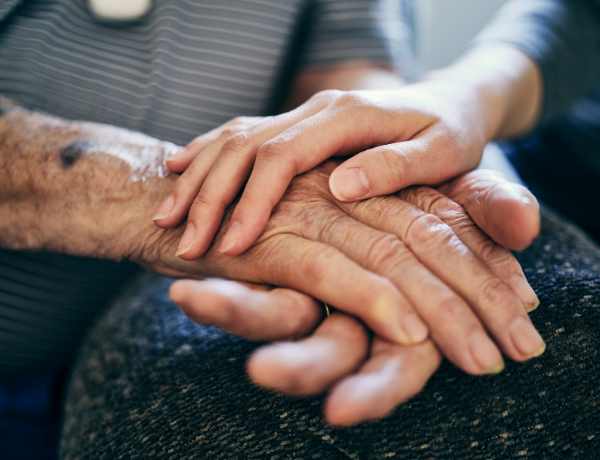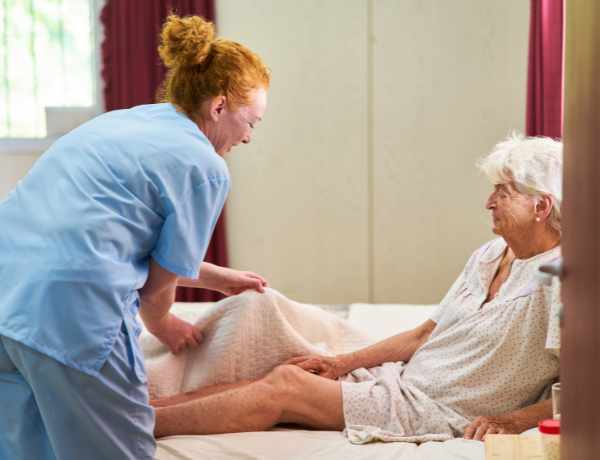
As the baby boomer generation ages, the demand for senior care has never been higher. Unfortunately, the number of available caregivers and nurses in nursing homes and long-term care facilities has not kept up with the demand, leading to understaffing issues.
As a leading nursing home abuse law firm, Hinkle Law has seen firsthand the devastating effects that understaffing can have on the quality of care that seniors receive in nursing homes. It's no secret that many nursing homes are chronically understaffed, with too few nurses and aides to provide adequate care to residents. But what many people may not realize is just how dire the consequences of understaffing can be.
Currently, 86 percent of nursing homes in the U.S are experiencing moderate to severe staffing shortages and 96 percent are struggling to hire additional staff, according to the American Health Care Association’s (AHCA) State of the Nursing Home Industry survey.

Understaffed nursing homes can cause a wide range of issues that impact the quality of care and the well-being of the residents. Here are some of the most significant issues that understaffing can cause:
Elder neglect caused by understaffed nursing homes refers to situations where elderly residents in nursing homes do not receive the appropriate level of care and attention due to a lack of sufficient staff. When there are not enough staff members to attend to the needs of all residents, it can lead to a variety of issues that can impact the health and well-being of elderly residents.
Examples of nursing home neglect caused by understaffing can include:
Elder abuse caused by understaffed nursing homes refers to situations where nursing home residents suffer harm or neglect as a result of inadequate staffing levels. When a nursing home is understaffed, the caregivers and staff may be unable to provide the necessary care and attention that residents require, which can result in serious harm to elderly residents.
Elder abuse can take many forms, including:
Understaffed nursing homes are particularly susceptible to neglect, as staff members may not have enough time or resources to ensure that residents receive adequate:
This can lead to serious health problems, such as dehydration, malnutrition, bedsores, and infections.
An understaffed facility can also lead to medication errors, as staff members may not have enough time to properly administer medications or monitor residents for adverse reactions. This can lead to serious health problems or even death in some cases.
When there are not enough staff members to assist residents with mobility and other activities, the risk of falls and injuries increases. This can be especially dangerous for residents with mobility issues, cognitive impairment, or other health conditions.
Understaffing can also cause emotional distress for residents, as they may not receive the emotional support and attention they need. This can lead to feelings of isolation, loneliness, and depression, which can negatively impact their overall well-being.
Finally, understaffing can lead to burnout and high turnover rates among nursing home staff. When staff members are overworked and underpaid, they may become disillusioned with their jobs and leave for greener pastures. This can create a vicious cycle of understaffing, as nursing homes struggle to find and retain qualified staff members.
Understaffing in nursing facilities can have severe consequences for immobile residents who may require extensive assistance with daily activities such as bathing, dressing, and toileting. Here are some of the consequences of understaffing in nursing homes for immobile residents:
Immobility can increase the risk of falls, and understaffing can exacerbate this risk. Staff members may not have the time or resources to assist residents with mobility, such as helping them to stand up or walk, which can result in falls and serious injuries.
Immobility can also increase the risk of infections, such as urinary tract infections, pneumonia, or skin infections. Understaffing can make it challenging for staff members to maintain a clean and hygienic environment, increasing the risk of infections spreading.
Immobility can also lead to social isolation, as residents may have limited mobility or may not be able to participate in social activities without assistance. Understaffing can exacerbate this isolation, as staff members may not have the time to provide residents with the necessary social stimulation or to facilitate social activities.
There are several reasons why nursing homes may be understaffed. Here are some of the most common reasons:
One of the most significant reasons for understaffing in nursing homes is cost-cutting. facilities may try to reduce their expenses by reducing the cost of labor, meaning fewer workers. This can be especially true for nursing homes that are struggling financially or have limited funding.
Another reason for understaffing in nursing homes is high turnover rates among staff members. Nursing home jobs can be physically and emotionally demanding, and the pay and benefits may not always be competitive. This can lead to burnout and high turnover rates, which can make it challenging for nursing facilities to maintain adequate staffing levels.
Nursing facilities may also struggle to attract and retain qualified staff members due to staffing challenges. For example, nursing homes in rural areas or low-income neighborhoods may have a harder time attracting qualified staff members. Additionally, nursing homes may struggle to find staff members with specialized skills, such as those needed to care for residents with dementia or other complex medical conditions.
As the population ages, the demand for nursing home care is increasing. This can create staffing challenges, as nursing homes may not be able to keep up with the demand for care. Additionally, the COVID-19 pandemic has highlighted the challenges of providing care in nursing homes, which may make some staff members reluctant to work in these facilities.
Nursing homes are subject to strict regulations that govern the number and type of staff members they must employ. However, some nursing facilities may try to skirt these regulations by reducing the number of staff members they employ or by hiring staff members with less training or experience.
Preventing understaffing in nursing homes is essential to ensure that residents receive the high-quality care they need and deserve. Here are some steps that can be taken to prevent understaffing:
One of the most effective ways to prevent understaffing in nursing homes is to increase funding. This can include increasing Medicaid reimbursement rates, which can help nursing homes to afford to hire more staff members. Additionally, governments can provide grants or subsidies to nursing homes to help them cover the costs of hiring additional staff.
Another way to prevent understaffing in nursing homes is to improve staffing standards. This can include setting minimum staffing requirements for nursing homes or implementing staffing ratios that ensure that residents receive the care they need. Additionally, nursing homes can implement policies that encourage staff retention, such as offering competitive wages and benefits, providing opportunities for professional development, and creating a positive work environment.
As the population ages, the demand for nursing home care is increasing. To prevent understaffing, nursing homes must adapt to these demographic shifts by increasing their capacity, developing new care models, and exploring alternative staffing models.
Nursing homes are subject to strict regulations that can make it challenging to hire and retain staff members. By streamlining these regulations, nursing homes can make it easier to hire and retain qualified staff members.
Technology can be an effective tool for preventing understaffing in nursing homes. For example, electronic health records can help staff members to coordinate care more effectively, while telehealth technology can enable nursing homes to access specialist care remotely.
Here are some questions you can ask nursing homes about their staff-to-resident ratio:
If families suspect their loved one's nursing home is understaffed, they can speak with the nursing home administration to voice their concerns. Additionally, families can contact their state's ombudsman program, which is designed to advocate for residents in nursing home facilities.
Some signs that a nursing home may be understaffed include residents not receiving the necessary care or services, staff members appearing overworked or stressed, residents appearing neglected or unclean, and long wait times for assistance or care.
If you suspect that your loved one has been harmed due to staffing shortages at a nursing home, there are several steps you can take:
Notify the nursing home administration immediately of your concerns and request an investigation into the matter. Make sure to document your concerns and any communication with the nursing home administration.
If you are unsatisfied with the nursing home administration's response, you can file a complaint with your state's regulatory agency. This agency is responsible for overseeing nursing homes and ensuring that they comply with state and federal regulations.
If your loved one has been harmed due to staffing shortages at a nursing home, you may be able to file a lawsuit against the facility. An experienced nursing home abuse lawyer can help you determine whether you have a viable case and what your legal options are.
If you are concerned about your loved one's safety and well-being at the nursing home, you may want to consider moving them to a different facility that has adequate staffing levels and a good track record of resident care.
Contact Hinkle Law Firm
While being proactive to improve the staffing issues at nursing homes is the best way to increaser resident care, sometimes it's not enough, and legal action is needed. Contact us today for a FREE consultation if your loved one was harmed due to staffing shortages in their nursing home.
Copyright © 2022 Hinkle Law | Privacy Policy | powered by
Disclaimer: Attorney Advertising. The information you obtain at this site is not, nor is it intended to be, legal advice. You should consult an attorney for advice regarding your individual situation. Contacting us does not create an attorney-client relationship. Please do not send any confidential information to us until such time as an attorney-client relationship has been established. Additionally, we provide medical information that does not, nor is it intended to, replace professional medical advice, diagnosis and treatment. Prior results from our featured testimonials do not guarantee a similar outcome. This site is protected by reCAPTCHA and the Google Privacy Policy and Terms of Service apply.